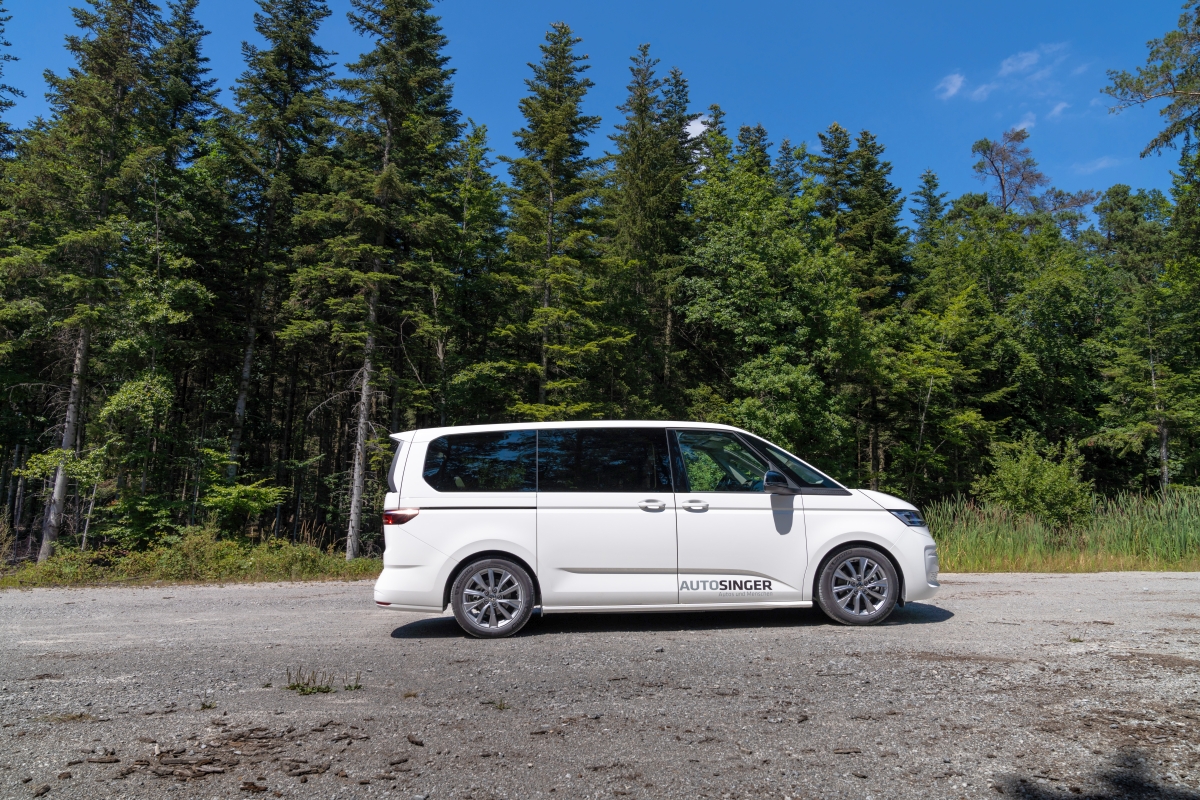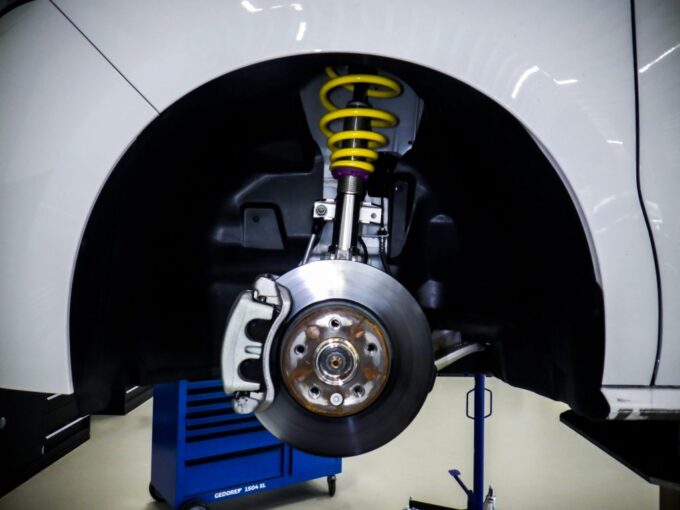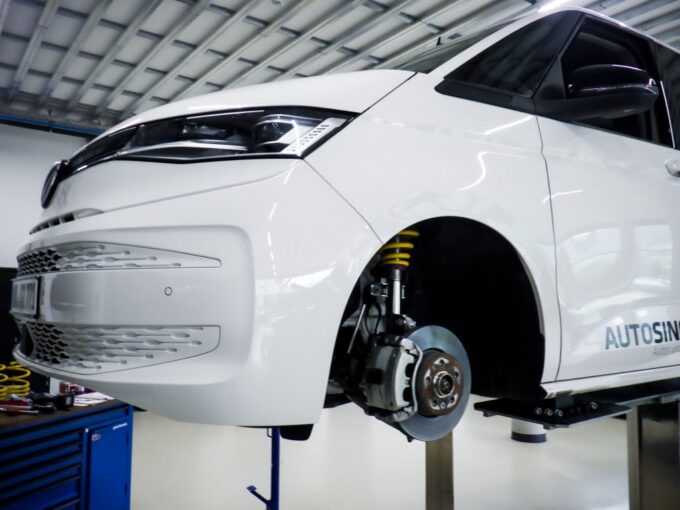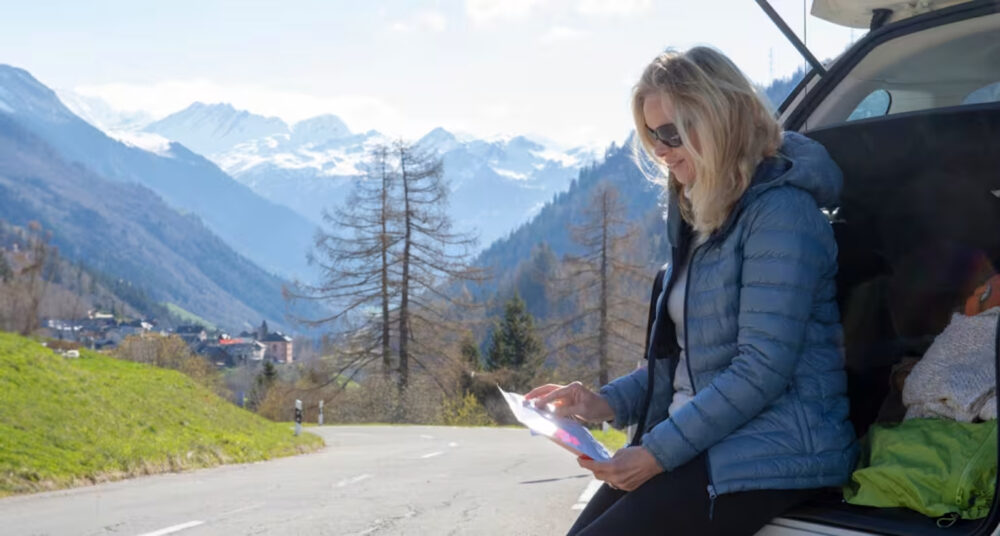KW suspensions: Nippy suspension for the Multivan T7 🎥
As of now, the KW V3 coilover suspension is available for the VW T7 Multivan with front-wheel drive. It gives the car a sporty, harmonious ride. A lowering of up to 55 millimeters is possible.
At 4.97 meters, the new VW T7 Multivan is longer and, at 1.94 meters, wider than its T6.1 predecessor. Nevertheless, much of the driving experience has remained almost unchanged, although the T7 also has a slightly longer front overhang and now a wheelbase of 3.12 meters.

Lowering of up to 55 millimeters
The stainless steel coilover suspension for the T7 Multivan allows stepless lowering of up to 55 millimeters at the drive axle and rear axle. If the maximum lowering is not to be exhausted, a minimum lowering of only 35 millimeters is also possible with the KW coilover suspension at the trapezoidal threads of the front struts and at the rear axle height adjustment.
The coilover suspension for the T7 Multivan is also set up with dampers with adjustable multi-valve damper technology, which enables harmonious suspension even with a tight setup. The basic tuning of the dampers and the springs as well as the suspension travel of the KW V3 are always designed "as tight as necessary and as comfortable as possible". You can see how the parts are mounted in the video using the example of a T6.
With a few clicks to the desired destination
With 16 clicks, the cross-section in the low-speed rebound valve can be varied to adjust the damping precisely to the individual driving sensation. If the rebound stage is opened, the ride comfort increases noticeably.
When the rebound valve is closed, the pitching and rolling movements of the 1.90 meter high body are significantly reduced. Handling becomes more dynamic than on the standard model. In addition, the adjustable low-speed compression stage can be closed or opened with twelve clicks to influence the steering behavior and the grip level of the tires.
Simply put, the task of the rebound damping is to tie the chassis to the road, while the compression damping, on the other hand, influences the compression and supports the body structure. Prices on request.












